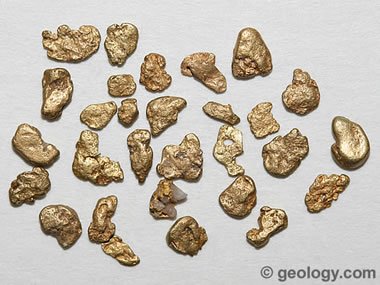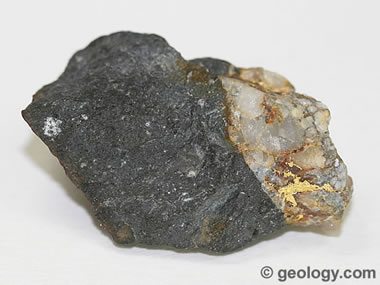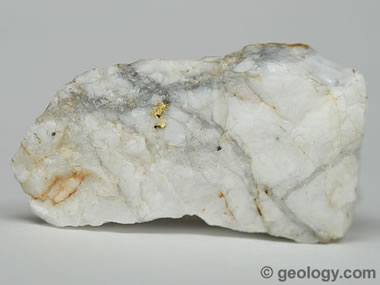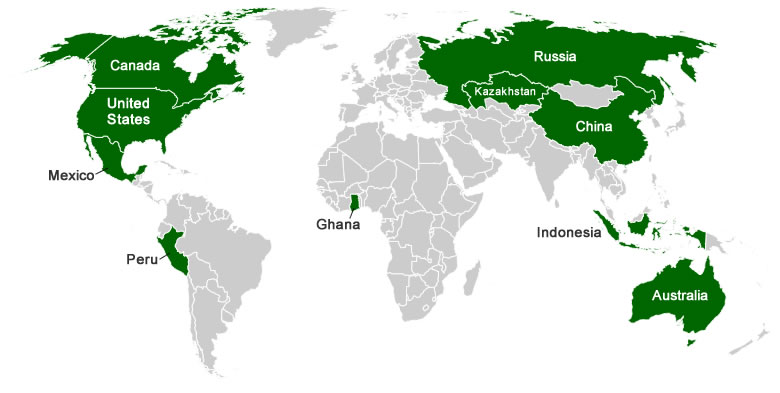
Gold Nuggets from Colorado. These specimens range between three and eight millimeters across. They have the uniform color and rounded edges common of alluvial gold particles.
What is Gold?
Native gold is an element and a mineral. It is highly prized by people because of its attractive color, its rarity, resistance to tarnish, and its many special properties - some of which are unique to gold. No other element has more uses than gold. All of these factors help support a price of gold that is higher than all but a few other metals.
Trace amounts of gold are found almost everywhere, but large deposits are found in only a few locations. Although there are about twenty different gold minerals, all of them are quite rare. Therefore, most gold found in nature is in the form of the native metal.
Gold occurs in hydrothermal veins deposited by ascending solutions, as disseminated particles through some sulfide deposits, and in placer deposits.
The most obvious physical property of gold is its color. It is one of just a few minerals whose names are used frequently in common language as the name of a color. The color is not altered by tarnish or the development of an oxidized surface. However, the color of gold varies with its composition. The color of gold is not constant.

Vein gold: Vein quartz with gold attached to basalt from California. This specimen is approximately 1 inch (2.4 centimeters) across.
Uses of Gold
| 2019 Gold Production |
| Country |
Metric Tons |
| China | 420 |
| Australia | 330 |
| Russia | 310 |
| United States | 200 |
| Canada | 180 |
| Indonesia | 160 |
| Ghana | 130 |
| Peru | 130 |
| Mexico | 110 |
| Kazakhstan | 100 |
| The values above are estimated gold production in metric tons. Data from USGS Mineral Commodity Summaries. |
|
|
Most of the gold that is newly consumed or recycled each year is used in the production of jewelry. About 10% is used in coinage or in the financial stores of governments. The remaining 12% is consumed in a wide range of other uses which include electronics, medicine, dentistry, computers, awards, pigments, gilding, and optics. More information on the uses of gold.






















